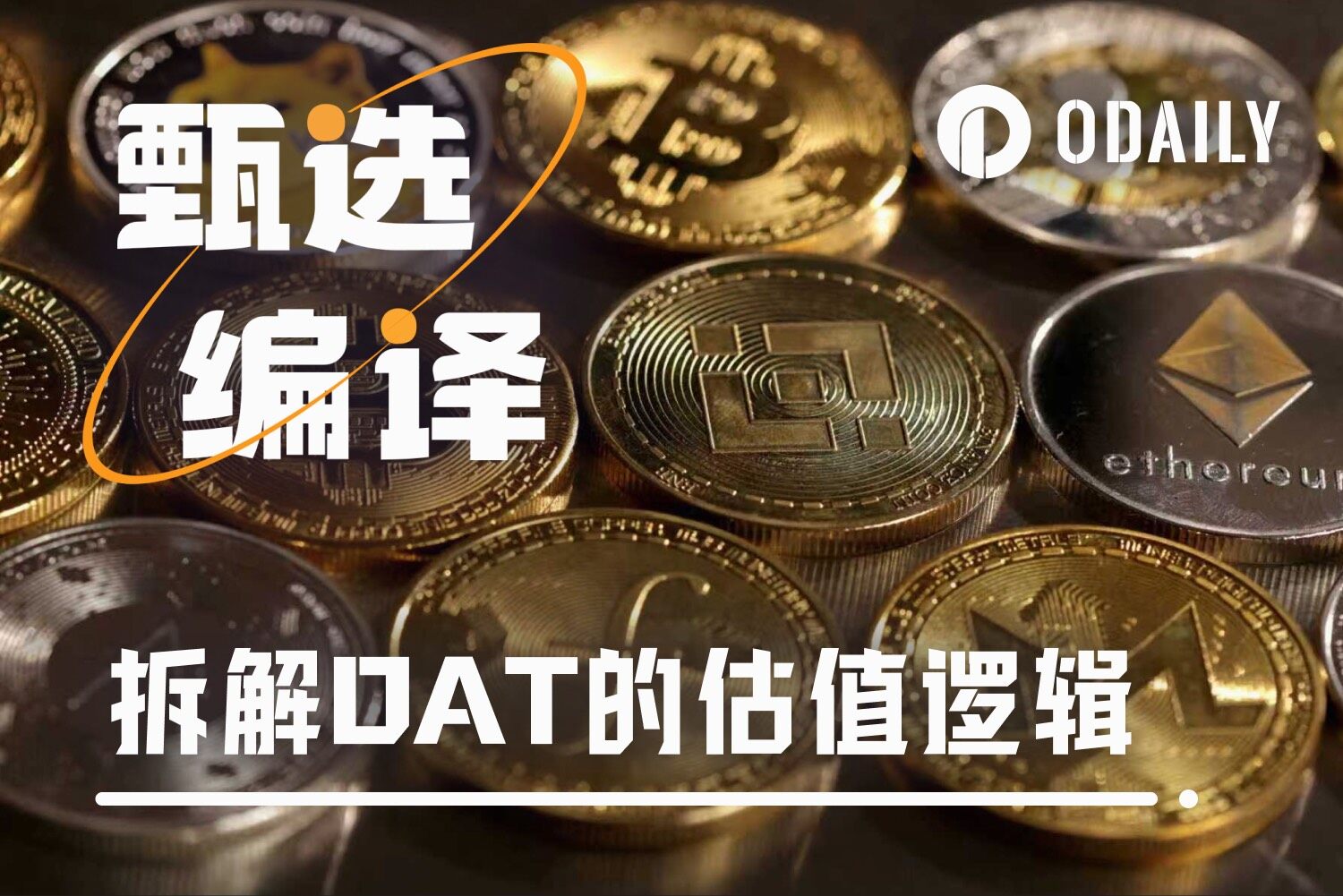DAT (Digital Acid) leaders are all offering discounts; which one presents a genuine opportunity to buy at the bottom?
This article is from Matt Hougan, Chief Investment Officer of Bitwise .
Compiled by Odaily Planet Daily ( @OdailyChina ); Translated by Azuma ( @azuma_eth )
Editor's Note: As the overall market declines, the market capitalization of digital asset treasury companies (DATs) has also suffered a collective blow. The mNAV (measuring the ratio of DAT trading value to cryptocurrency holding value) of leading ETH DAT companies such as BitMine and SharpLink has already fallen below 1, and the premium of BTC DAT leader Strategy has also narrowed to 1.14 due to recent index delisting pressure.
Amid the panic, discussions surrounding whether the DAT model has been disproven and how it should be valued have intensified. In the early hours of November 24th, Bitwise's Chief Investment Officer, Matt Hougan, offered his perspective on this issue on X.
The following is the original text by Matt Hougan, translated by Odaily.

Recently, I've seen a lot of poor analysis of Digital Asset Treasury (DAT) companies. Specifically, many people misunderstand whether they should trade at a price higher, lower, or equal to the value of their held assets (the so-called "mNAV").
When evaluating the value of a DAT, you should first ask yourself: If this company had a fixed lifespan, how much would it be worth?
The value of this approach becomes clear when viewed from a very short-term perspective. For example, suppose a Bitcoin DAT announces that it will close this afternoon and distribute its Bitcoin holdings to investors; its trading price will then be exactly equal to its Bitcoin value (mNAV = 1.0).
Now let's extend this timeframe. What if it announces it will shut down in a year? Now you have to consider all the possible reasons why the DAT might trade above or below its Bitcoin value. Let's analyze them one by one.
The three main reasons for the discount of DAT are: insufficient liquidity, operating expenses, and potential risks.
- Insufficient liquidity : You certainly wouldn't want to buy Bitcoin at the current price that you won't receive for a year, but you might be willing to accept a discount, such as a 5% or 10% discount—personally, I would accept a 10% discount—which would correspondingly reduce the value of DAT.
- Operating Expenses : Every dollar spent on operating expenses or executive compensation comes from your pocket. Let's say this DAT, which will be liquidated in 12 months, holds $100 worth of Bitcoin per share, but needs to pay executives the equivalent of $10 per share annually. You would certainly demand a 10% discount relative to net asset value.
- Potential risks : There is always a risk that the company may make mistakes. This also needs to be factored into the price.
Now let's look at why DAT might be trading at a premium. In the US, there's only one reason—it can continuously increase the amount of cryptocurrency held per share. In my observation, DAT achieves this primarily through four methods.
- One method is issuing bonds : If you issue bonds in US dollars and use them to buy cryptocurrencies, you can pay off the debt when the cryptocurrency appreciates against the dollar, while simultaneously increasing the amount of crypto assets you hold per share. This is roughly how Strategy increases its BTC holdings per share. Of course, the opposite could happen if the price of Bitcoin falls.
- Secondly, lending cryptocurrency : This means earning interest income by lending cryptocurrency, thereby increasing the number of cryptocurrencies held per share.
- Thirdly, one can use derivatives : holding cryptocurrency while simultaneously engaging in activities such as selling call options can generate profits and acquire more assets. Of course, this will sacrifice some potential for price appreciation.
- Fourthly, it may acquire cryptocurrencies at a discount : DAT may acquire cryptocurrencies at a discount through various means:
- Purchase locked-up assets from foundations that want to sell specific assets but do not want to disrupt the market;
- Acquire DAT from other discounted transactions;
- Repurchase shares when its own stock is traded at a discount;
- Acquire businesses that generate cash flow and use that cash flow to purchase cryptocurrencies.
One of the major challenges facing DATs is that the reasons why they should trade at a discount are clear, while the reasons why they might trade at a premium are uncertain.
Therefore, the threshold for DAT is very high, and most companies will trade at a discount, with only a very few outstanding companies trading at a premium.
Returning to the previous example, if you have a Bitcoin DAT that will be liquidated in 12 months, you can now:
- Calculate its operating expenses;
- Add risk discount;
- These discounts are offset by the expectation that the company will increase its ability to hold Bitcoin per share.
- What we have now determined is its fair value.
You might say, "But DATs don't have a fixed lifespan; they exist forever!"
This certainly complicates the analysis, but essentially means all factors will be amplified. Expenses and risks compound over time and require close monitoring; similarly, DAT, which can consistently increase the number of cryptocurrencies per share, could be extremely valuable.
In reviewing DAT’s methods for increasing the amount of cryptocurrency per share, I noticed that scale advantage is crucial in all aspects.
Larger DATs find it easier to issue bonds than smaller DATs. They have more cryptocurrency available for lending; access to more liquid options markets; and an advantage in mergers and acquisitions and other discounted transactions.
Over the past six months, DAT has consistently moved in tandem with other stocks. Looking ahead, I believe the divergence will intensify— a few companies will perform exceptionally well and command premiums, while the majority will underperform and continue to trade at a discount.
Further Reading
Could it be removed from the index? Strategy is mired in a "quadruple strangulation" crisis.
- 核心观点:DAT估值需综合折价与溢价因素。
- 关键要素:
- 折价三因素:流动性不足、运营开支、潜在风险。
- 溢价四途径:发债、借贷、衍生品、折价收购。
- 规模优势决定DAT长期竞争力。
- 市场影响:DAT将出现两极分化,多数持续折价。
- 时效性标注:中期影响



